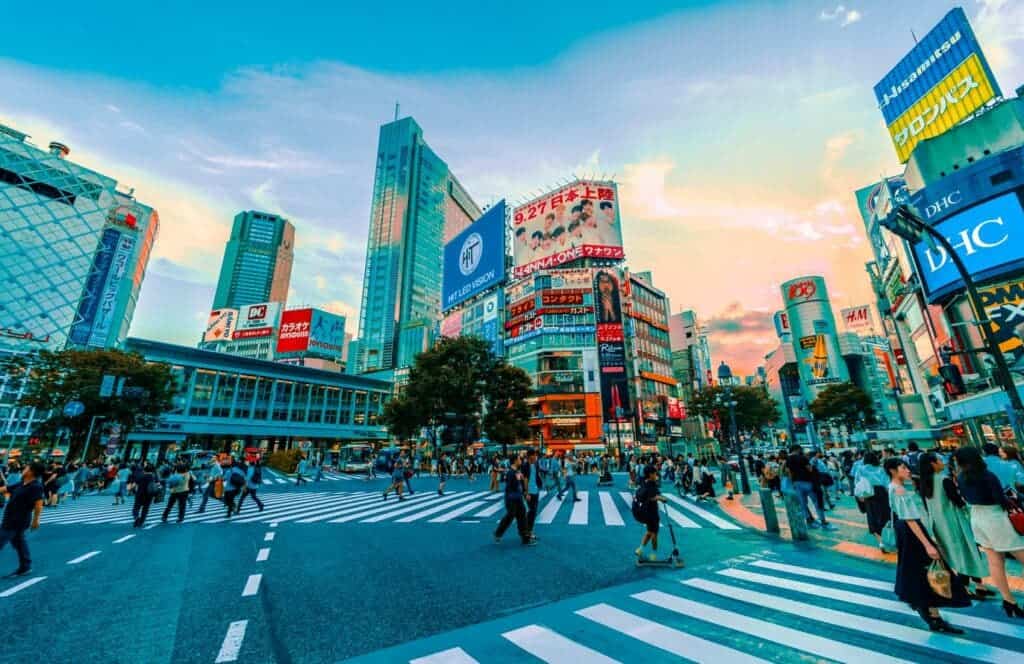Japan was doing almost everything right, and then it pushed the economy too quickly. Now, as authorities continue to encourage people to travel and inject money into the economy, coronavirus cases are surging across the entire Asian country.

The calls of Japanese authorities for people to travel and eat out seem extremely unusual in the current context, but then again, the whole pandemic was unusual in Japan.
When the coronavirus first reared its head in Japan, many feared a disaster. An aged population, clustered together in large urban centers, seemed like an excellent place for the virus to thrive. To make matters even worse, the country had no legal framework to impose a lockdown, so all authorities could do is close some venues down and urge people to stay home. Yet somehow, against all odds, it worked — just barely, as hospitals were filled to capacity two months ago, but it worked.
There was no silver bullet, not one strategy that helped Japan control the outbreak. The widespread usage of face masks was a key factor, and Japan’s culture of hygiene also helped. The grassroots response to the pandemic (which included hands-on, analog contact tracing) also played a role, as did several other atypical approaches that the government imposed. In this hodgepodge of measures, something worked, and Japan managed to flatten the curve. For a while, everything seemed to be going fine.
Then, Japan acted as if the virus was gone. It wasn’t.
The bad, the good, and then the bad again
After initial success, the Japanese government offered a masterclass in how not to deal with a pandemic. It started with tiny bouts of arrogance. Japan’s finance minister claimed that a higher “cultural standard” helped contain the disease, even as the country’s experts admitted they weren’t sure exactly what worked. Then, Japan’s panel of experts (praised for its leadership during the first wave) was dissolved in a political mix-up, as the government heavily prioritized supporting the economy.
By June, restaurants and bars were fully open, and most sporting events were back in full force — in stark contrast to neighboring regions, which opened up cautiously in stages. Things culminated with a much-derided campaign to encourage domestic travel just as infections were surging.
Now, experts believe Japan’s reopening was premature, and it’s causing cases to spike.
“This is the result of the government prioritizing economic activity by getting people to move around again over infection control,” said Yoshihito Niki, a professor of infectious diseases at Showa University’s School of Medicine.
Japan understood earlier than most countries that the coronavirus is mostly transmitted through air, and it understood (and accepted) that strict measures must be taken to control the spread. Yet somehow, it lost track of the plot.
Whether it was underestimating the resurgence of the virus or overestimating its own capacity, Japan acted as if the virus was gone and things could get back to normal. But unlike the islands of Iceland or New Zealand, which could realistically hope to eradicate the virus, Japan’s population of 126 million was always faced with the virus resurging from the shadows.
This is exactly what’s going on now.
From bad to worse
It’s not just that cases are surging in Japan, but the positivity rate is also increasing, which is another unfavorable sign. Japan’s initial approach was to focus on pooled testing and manual contact tracing, but both approaches lose effectiveness if the number of cases grows suddenly, and despite progress, Japan’s testing has fallen behind the curve. To make matters even worse, there are also accusations of officials misrepresenting data.
Despite doing well where others faltered initially, Japan now seems determined to repeat the mistakes of others. Chief Cabinet Secretary Yoshihide Suga repeated Friday emphasized that another state of emergency isn’t required, motivating that the death rate remains low by almost any standards, and the medical system isn’t overburdened — ignoring the simple lesson that the higher death rate and burdening of the medical system comes with a delay of a couple of weeks.
“Hospitals can treat the infected,” said Koji Wada, a public health professor at the International University of Health and Welfare in Tokyo. “But only the government, through public health measures, can reduce the number of infected people.”
Shigeru Omi, the head of the current panel of experts advising the governments, warned officials against the domestic tourism push, only to be ignored. Furthermore, the country’s government has delegated responsibility to local governments, without showing clear guidance. Much like in the US, this lack of central responsibility is proving to be a counterproductive approach.
The window of opportunity is shutting
Local governments are trying to address the situation. In Osaka, authorities are asking people to avoid dining in large groups, and bars in Tokyo are asked to shorten operating hours; previously, Tokyo had to pay bars to shut down.
But these are baby steps in what, by all we’ve learned so far, appears to be a marathon.
Haruo Ozaki, the head of the Tokyo Medical Association, called on the lawmakers to produce legislation that allows the government to shut down businesses and impose other public health measures.
Japan still has some advantages over other areas (the widespread usage of face masks, for instance), but if the situation continues to be ignored, it seems hard to avoid a disaster.
“This is our last chance to mitigate the spread of infection,” said Ozaki.
There’s much to learn from the case of Japan. Initially, the country showed that an energetic early approach that plays on the country’s cultural strengths can be surprisingly effective. But no matter how good of a job you do, resting on your laurels and leaving your guard down is treacherous. Keeping the first wave in check and flattening the curve is only a long step. Many more are required afterward.









